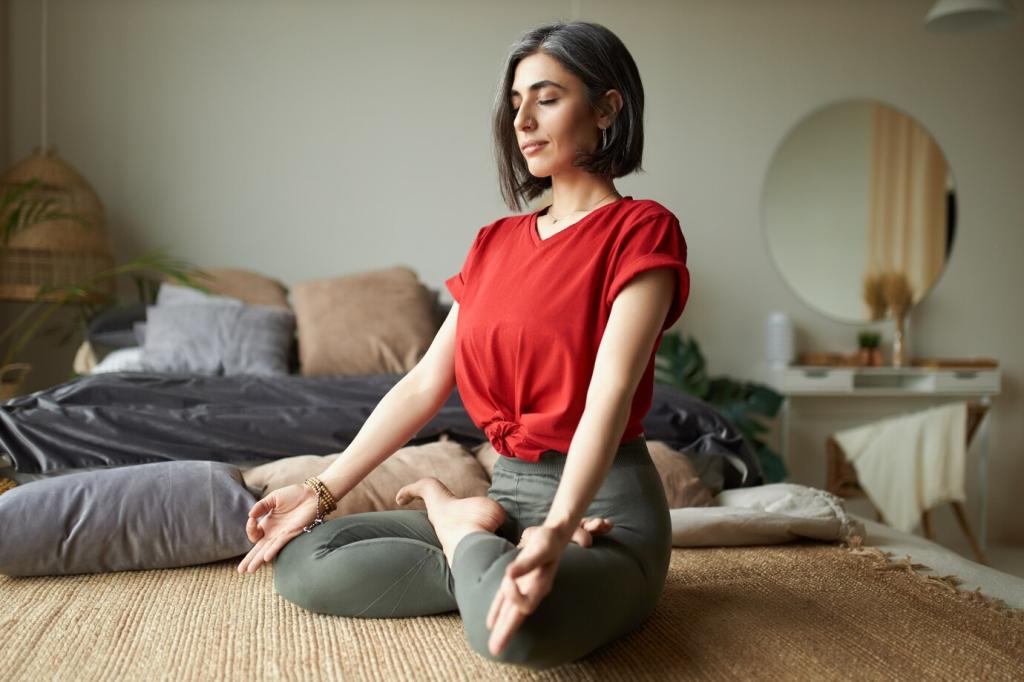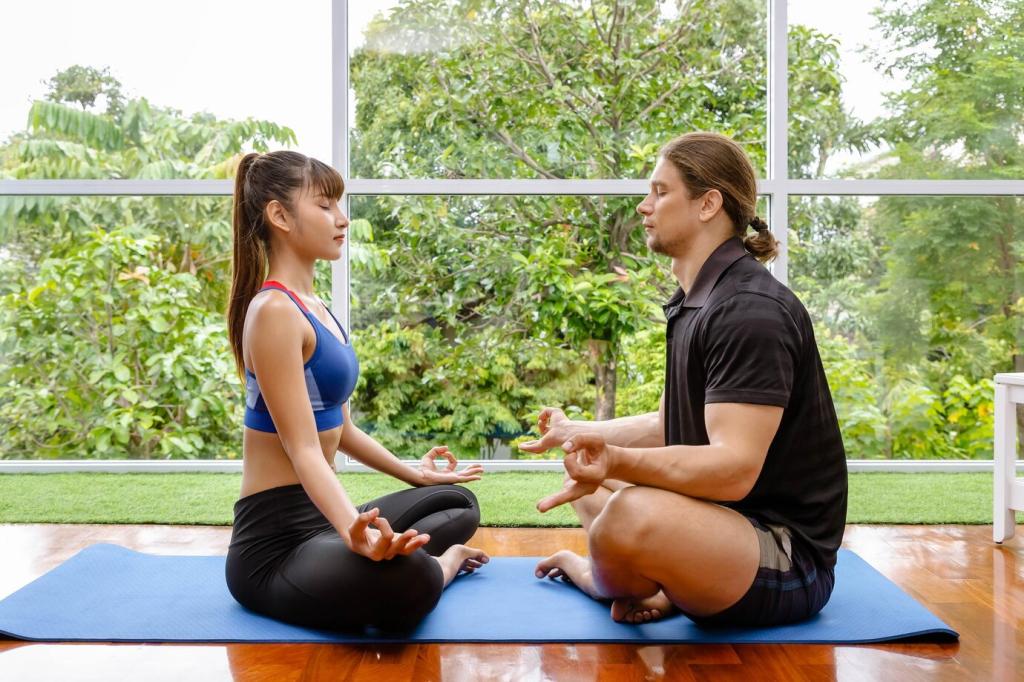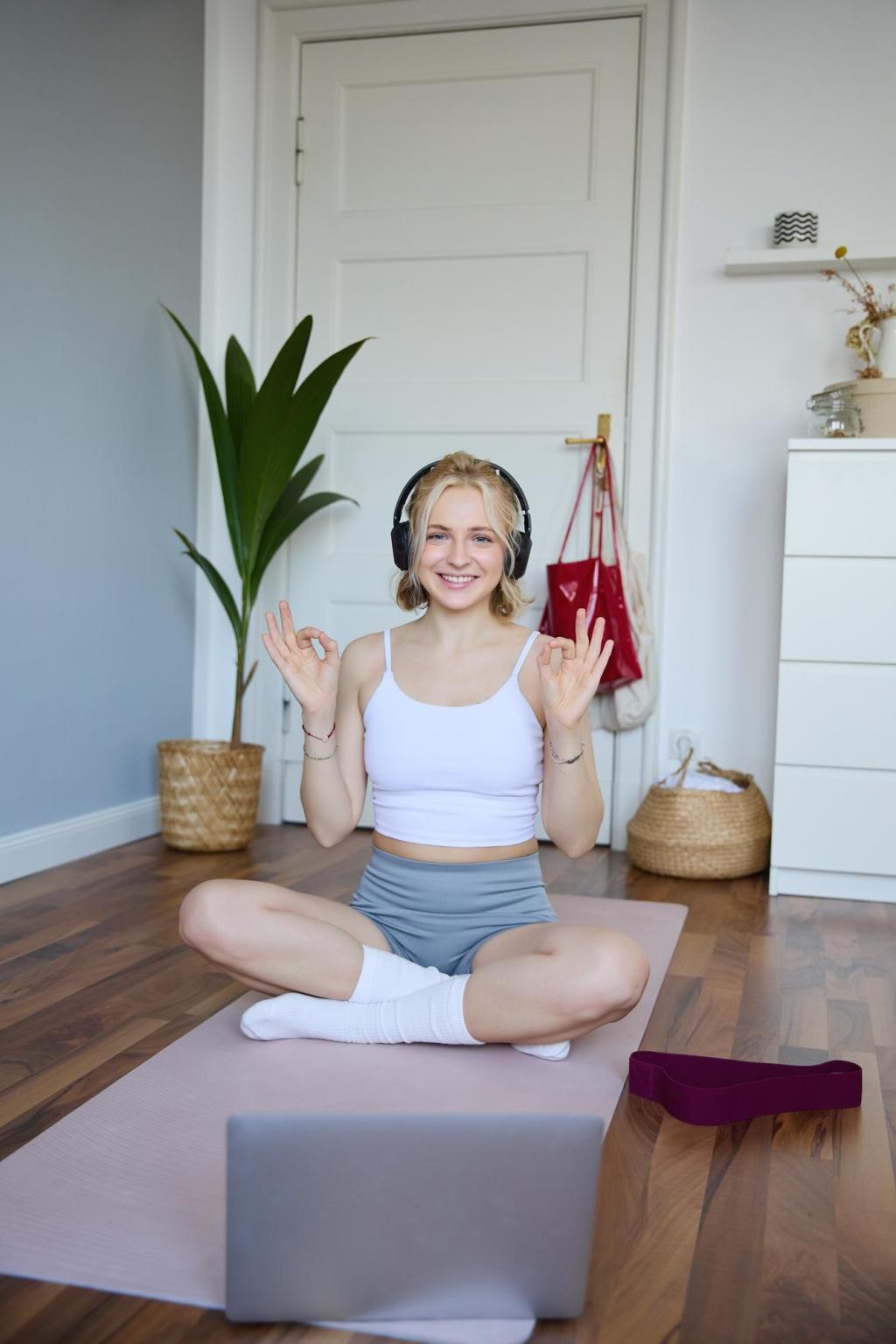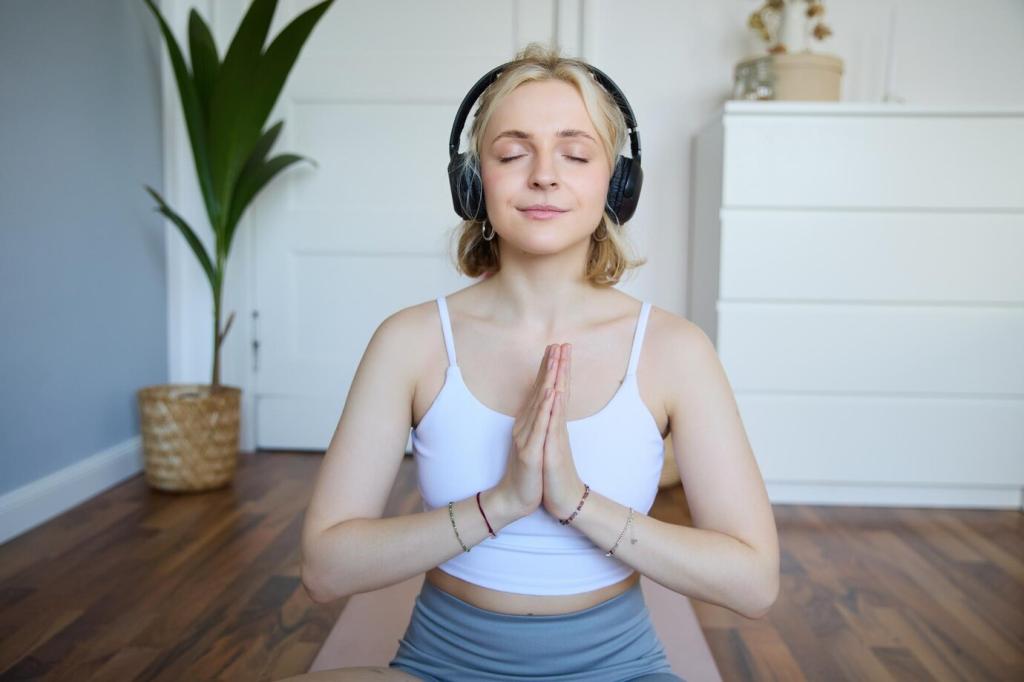Preparing Your Space and Mind
Choose a spot that feels supportive: a chair with a straight back, a cushion on a rug, perhaps softened lighting. Keep a blanket nearby. Let this corner whisper, without words, that you are safe to pause.
Preparing Your Space and Mind
Before you begin, say quietly: today I will simply notice. Expect wandering thoughts. Expect uneven breaths. Expect ordinary distractions. Your kindness toward these moments builds the steadiness you are here to learn.







